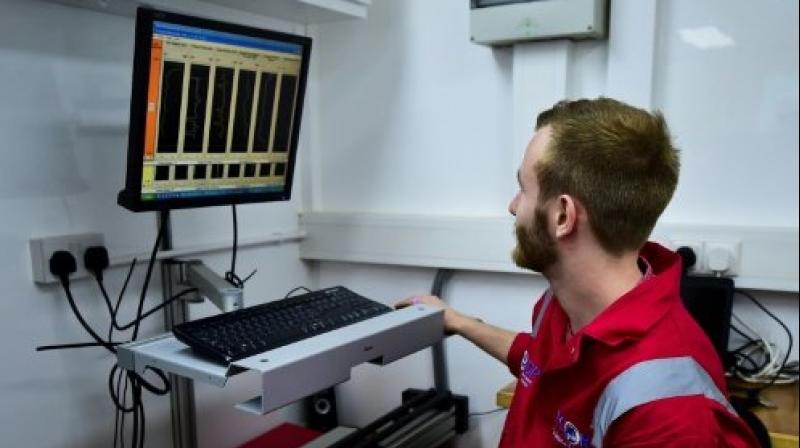Dino-killing crater shows clues about Ice Age sea level

The massive underwater crater left by the asteroid that exterminated the dinosaurs has provided new evidence that sea levels were much lower during the last Ice Age, researchers said.
Scientists worked on a platform off Mexico's east coast to dig for clues about the destruction of life 66 million years ago inside the 200-kilometer (125-mile) wide Chicxulub crater.
By chance, the researchers found evidence that the sea was much further away than the current coast line during the last Ice Age, which began 110,000 years ago and ended around 11,000 years ago, said mission leader Jaime Urrutia, president of the Mexican Academy of Science.
While a large part of the crater is now under the Gulf of Mexico, it was originally over land after the asteroid struck the planet.
"We discovered a circular structure at the bottom (of the sea)," Urrutia told a news conference.
"The only way that (such structures) are made is through the dissolution of carbonate and for carbonate to dissolve it must be exposed to air," he said.
This shows that the Yucatan peninsula was "literally much larger" between 18,000 and 23,000 years ago during the last Ice Age, the scientist said.
Geologists, paleontologists and microbiologists arrived on the Myrtle platform in the Gulf in April and worked there for two months, digging 1.5 km under the sea floor and extracting six tonnes of rock.

